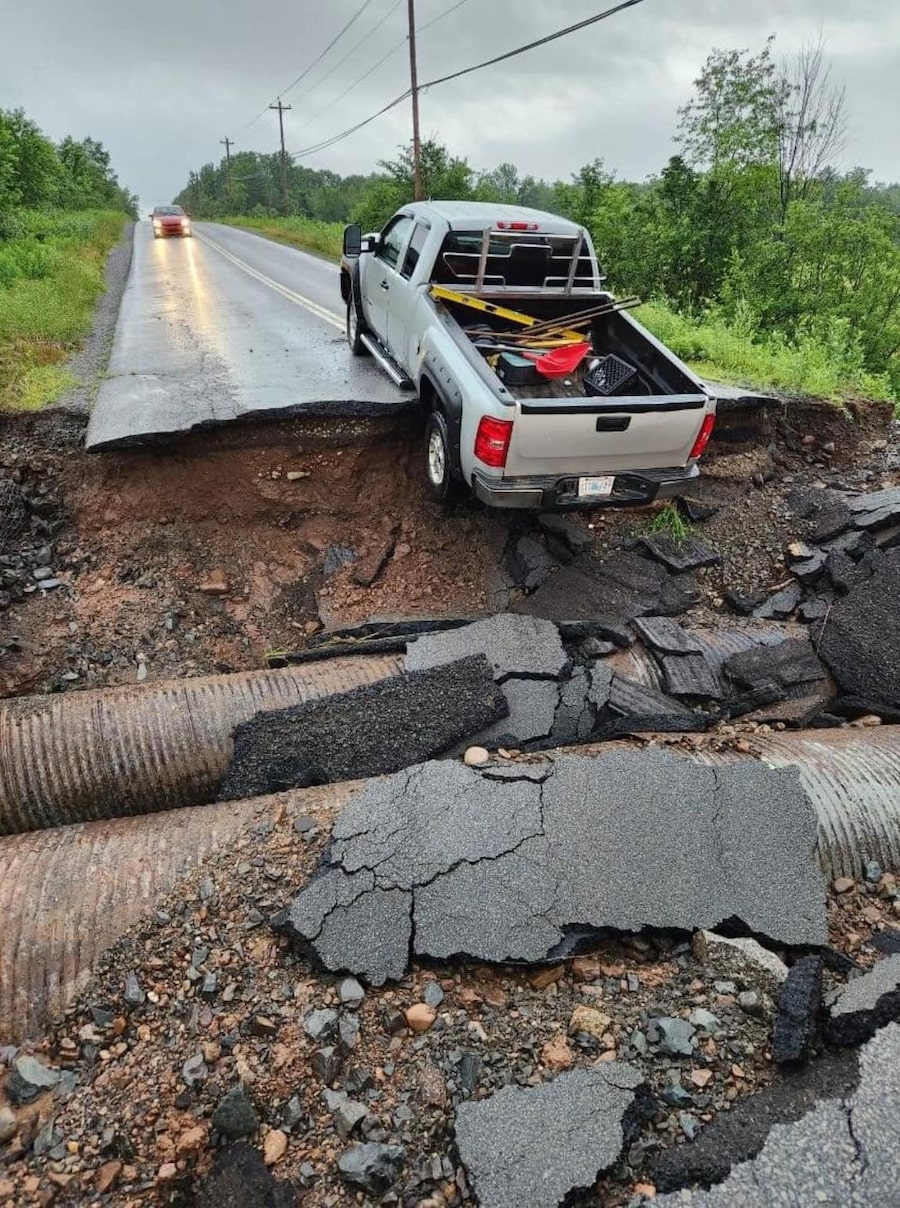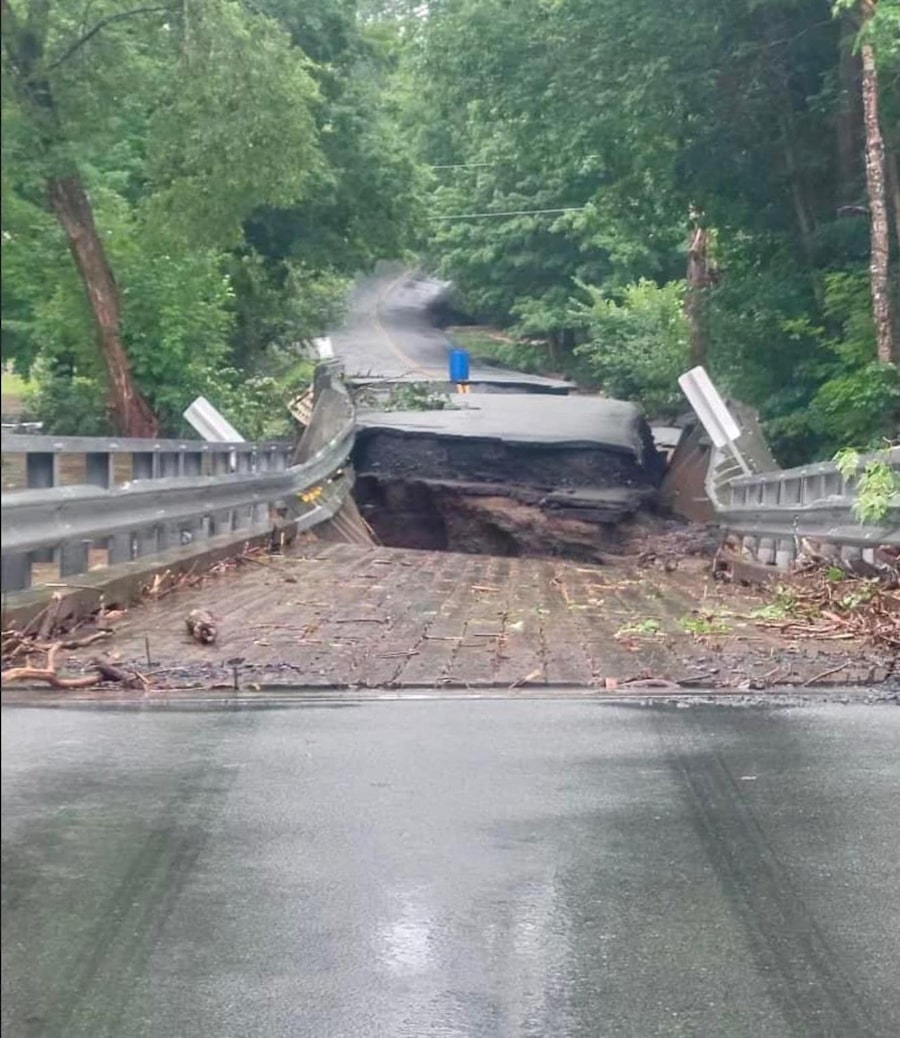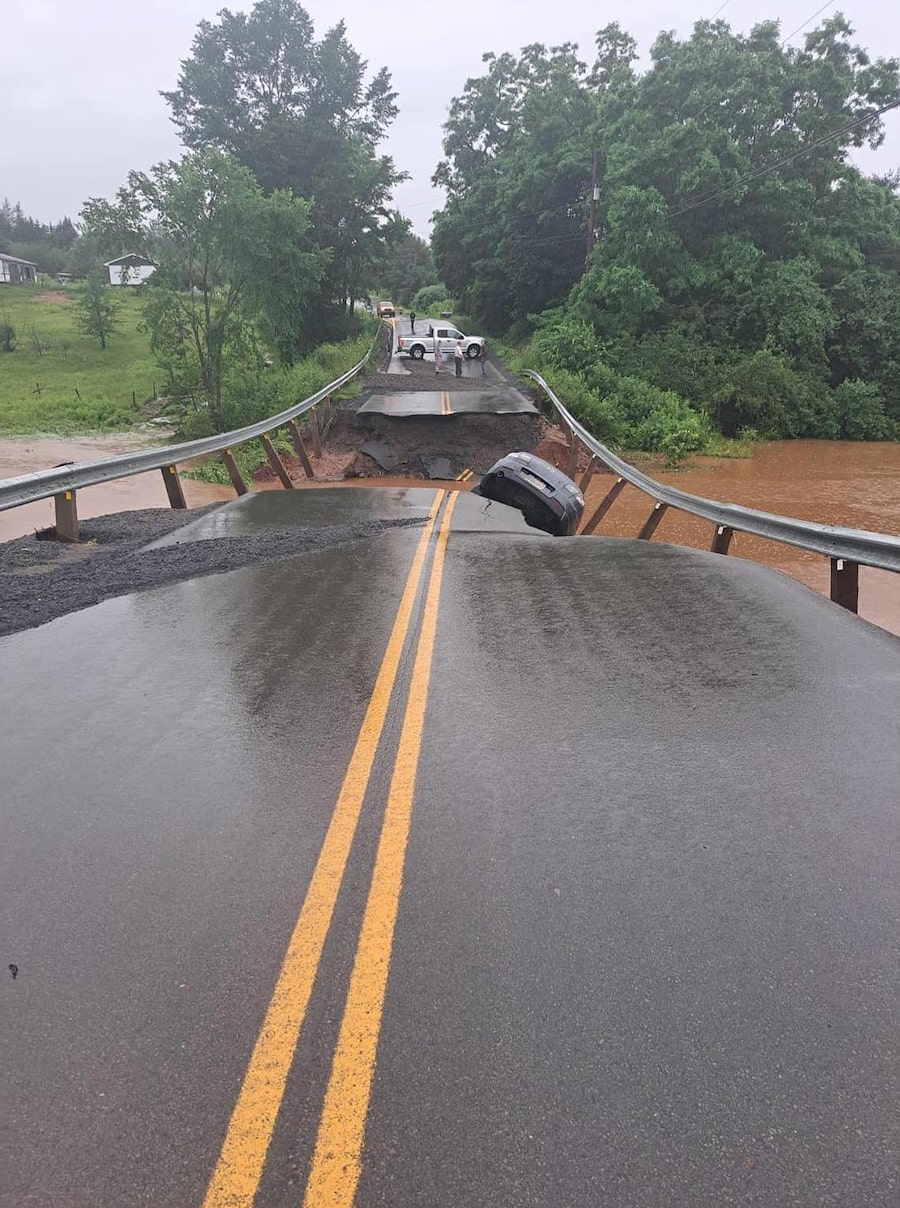Rescue personnel operates, in Bedford, Nova Scotia, Canada, in this picture obtained from social media, July 21, 2023. Halifax Search and Rescue/via REUTERS THIS IMAGE HAS BEEN SUPPLIED BY A THIRD PARTY. MANDATORY CREDIT. NO RESALES. NO ARCHIVES.Halifax Search and Rescue/Reuters
Torrential downpours caused widespread flooding across Nova Scotia on Saturday, damaging homes and infrastructure and triggering a search for four people who were missing after the vehicles they were travelling in were submerged in floodwaters.
Two children were among five people travelling in West Hants, N.S., when their vehicle was submerged, RCMP spokesperson Cindy Bayers said in an e-mail, adding that the three other occupants managed to escape.
“A youth and another man are also unaccounted for after the vehicle they were travelling in was submerged, also in West Hants,” she added. Two other occupants of the vehicle were rescued, she said.
The RCMP said searches for the missing were underway, but they urged the public to stay home and not join the search “as current conditions are dangerous.” They said there were no other reports of missing or injured people.
The list of infrastructure damage from the flooding is “long and it will continue to grow,” said Premier Tim Houston during a news conference Saturday afternoon.
“We got three months’ worth of rain in less than 24 hours. It came fast, and it came furious,” Mr. Houston said. “Our climate is changing, it’s obvious around us.”
In the Municipality of the District of Lunenburg, 435 homes in the Fancy Lake area were asked to evacuate, said Mayor Carolyn Bolivar-Getson.
“We are dealing with a storm that we have never experienced in our area in a lifetime,” she said.

A Hants County, N.S. road is left in ruins in the wake of a massive storm system in a photo from the municipality's Mayor Abraham Zebian on Saturday July 22, 2023.Mayor Abraham Zebian-West, of Hants Regional Municipality/Handout
Hundreds of people were also evacuated early Saturday morning in West Hants Regional Municipality for fear that a local dam would breach. “There was no breach, and we thank God for that,” Mayor Abraham Zebian said in an interview. “We’re just trying to get the whole situation under control right now.”
He said he had never seen that much rain fall so quickly. “It just overwhelmed all the systems: It washed out roads, it struck out bridges, it took people’s homes,” he said. “It’s a sad day for a lot of people.”
Emergency shelters were opened for evacuees throughout the affected areas.
Officials said some places received between 200 and 300 mm of rain since Friday afternoon. Ian Hubbard, a meteorologist with Environment Canada, said Halifax normally gets around 95 mm of rain for the entire month of July. What fell since Friday represents “a tremendous amount of water coming down in a very short period of time,” he said, in a province that already experienced a very wet month contrasting with the hot and dry weather that exacerbated major wildfires in May.
Some areas could expect an additional 40 to 100 mm, Environment Canada said in an online advisory Saturday. “The tropical nature of the rainfall from this system has already significantly impacted parts of the province,” the agency said, and the ground, “already near saturation, has little ability to absorb further rainfall.” Heavy precipitation was also expected on Prince Edward Island.
Nova Scotia Public Works Minister Kim Masland said in a statement that a full assessment of the damage to provincial infrastructure would have to wait until the flood waters recede. She warned it would take time to reopen roads – several of which were closed starting Friday afternoon around Halifax – and make repairs.
Halifax District RCMP advised motorists to stay home due to bad weather and said there have been multiple reports of local flooding on Hammonds Plains Road, Lucasville Road, Sackville Cross Road, and parts of Sackville Drive and Beaverbank Road.
Nova Scotia Power said in a news release that “at peak, approximately 70,000 customers lost power due to lightning impacts on power equipment and infrastructure.” More than 10,000 were still in the dark around noon on Saturday.
Extensive flooding is seen in Bedford, N.S. after the province experienced the heaviest rainfall in the area in more than 50 years.TYLER FORD/Reuters
Buildings are seen upended on a riverbank as a man paddles a kayak through floodwater on Saturday, July 22.Darren Calabrese/The Canadian Press
Climate hazards, including heavy rainfalls and flooding causing billions of dollars in damages, have intensified across North America. They are projected to continue to do so as the planet gets warmer, according to the Intergovernmental Panel on Climate Change, an international body of hundreds of climate scientists. The same is true of heatwaves and wildfires.
Meanwhile, more than 440 active wildfires were burning across B.C. Saturday – nearly half of the country’s total – including 270 deemed out of control, according to the Canadian Interagency Forest Fire Centre (CIFFC).
Intense heat seemed to worsen the situation, with 68 new blazes erupting Saturday. There were 87 active evacuation orders and alerts affecting municipalities, regional districts, and First Nations throughout the province Saturday, according to B.C.’s online emergency map.
Much of the province’s south, including the Okanagan Valley, the South Thompson, and the southern Fraser Canyon, faced unseasonably hot temperatures with highs near 35 degrees Celsius, triggering heat warnings from Environment Canada.
Aimée Harper, a spokesperson for the B.C. Ministry of Emergency Management and Climate Readiness, said that as of Friday afternoon, approximately 212 people were under an evacuation order and 2,018 people under an evacuation alert in the province due to wildfires.
Scorching heat is also expected elsewhere in the country. The federal agency has issued warnings for areas of southern Alberta and southwestern Saskatchewan, as well as parts of the Yukon and the Northwest Territories.
More than 11 million hectares have been burned across Canada this year, making it by far the country’s worst wildfire season on record, and three firefighters have been killed on duty.
With a report from The Canadian Press.


